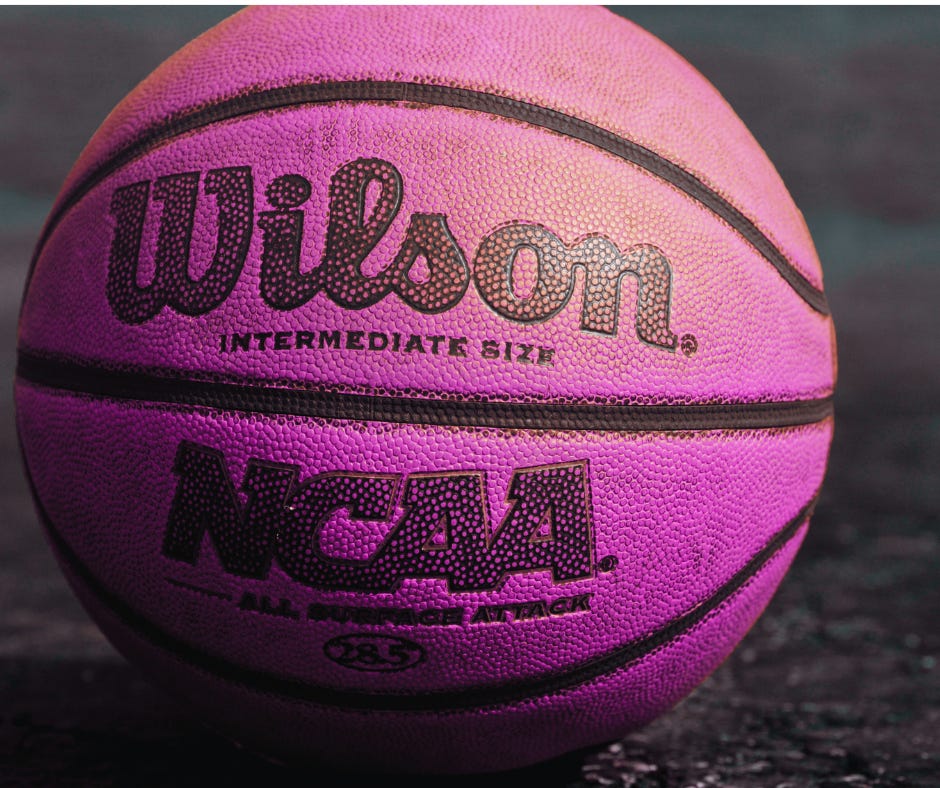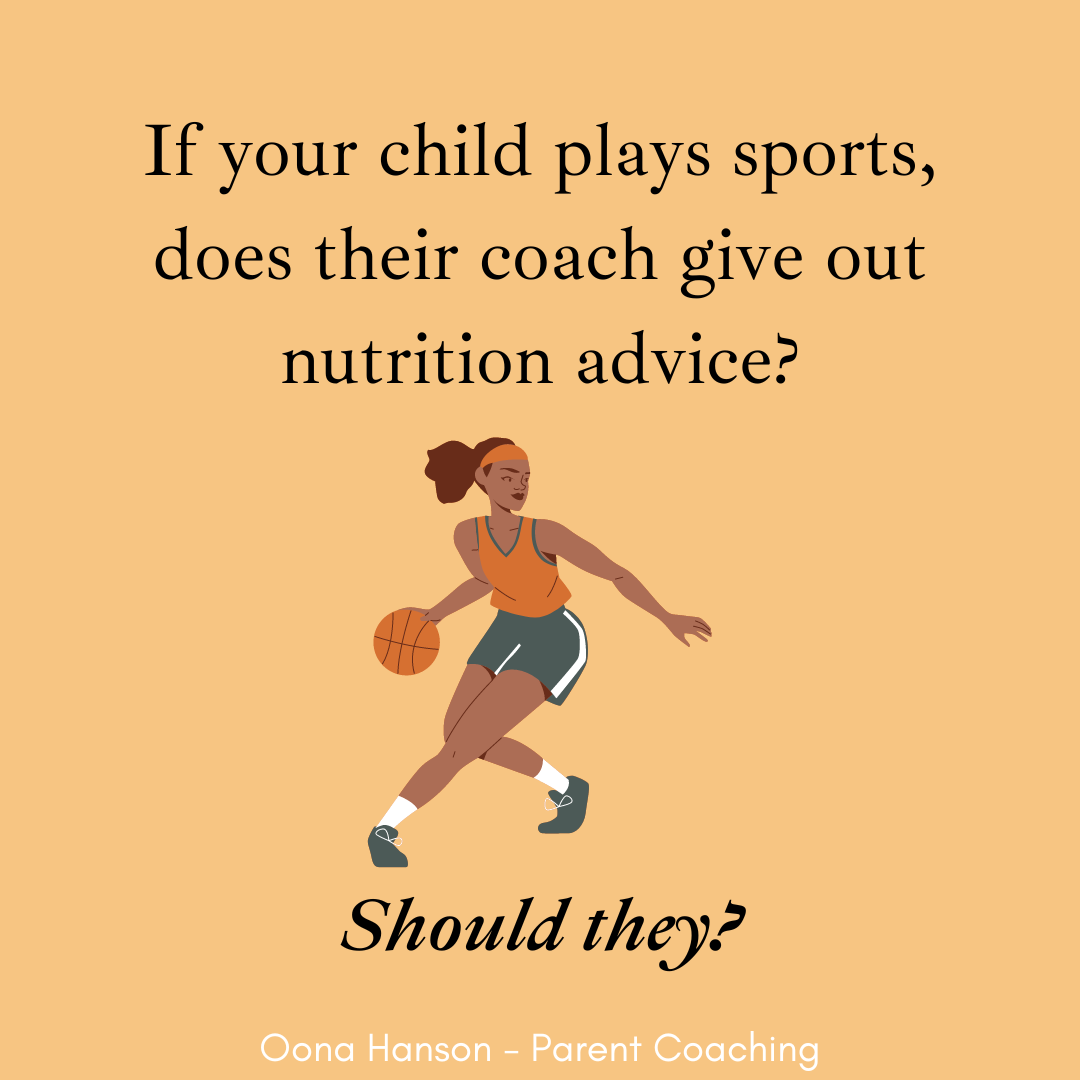Were you one of the 18.9 million people (peaking at 24 million!) who tuned in for the NCAA women’s basketball title game on Sunday?
If you follow me on twitter or come across my Instagram stories, you already know I’m a huge fan of women’s college basketball and especially the University of Iowa. Following this Hawkeye team has brought me so much joy over the last few years. It was tough to watch them come up just short again, but it’s impressive to make it to back-to-back finals—and to beat the reigning champ each time to get there.
Huge congrats to coach Dawn Staley and the entire Gamecocks team, who very much earned their third national title—and definitely didn’t “steal Caitlin Clark’s last chance at the ring,” as a recent NPR headline suggested. This South Carolina dynasty is something special.
As the now ubiquitous slogan goes, everyone watches women’s sports. The explosion of attention on the women’s game isn’t just because of a new generation of stand-out players who have become household names. It’s largely due to the investment in these teams, including the decision to televise games and provide more media coverage overall.
The fact that college athletes can now earn money from endorsement deals means their names and faces are reaching even people who didn’t already follow their sport. As is whispered in an Iowa cornfield in A Field of Dreams, “If you build it, they will come.”
Lest you’re worried I’m turning this into a sports newsletter or an Iowa fan page, I promise you’ll appreciate how the rise in women’s athletics relates to parenting in diet culture.
With more eyes on the women’s game, we are also getting more eyes on women’s bodies. And with the attention comes, well, you guessed it: sexualization, objectification, racism, colorism, weight stigma, beauty ideals—intersecting factors that have powerful effects on body image and overall wellbeing.1
And we’re watching it right alongside all the wonderful things happening for women in sport.
In a world where women and girls are constantly being told to shrink themselves, basketball is a sport that celebrates size.
Basketball rewards athletes who own the power of their physical dimensions on the court. It’s a sport where men’s and women’s uniforms are essentially identical (in contrast to, say, volleyball or gymnastics). It’s a sport known for its diversity. It’s a sport without one narrow “aesthetic” ideal.
Yet even in a game where size is an asset and being “a big” is a key role, the ability to take up space isn’t given equally to everyone.
In the famous second round match-up between Iowa State and Stanford, for instance, the pre-game hype focused on Audi Crooks and Cameron Brink, two of the top post players in the country. The online cruelty hurled at the freshman, who is in a larger body, was juxtaposed against praise and leering adoration of the thin, blond senior.
The way you look doesn’t affect how many points you can score (even shorter guards can be very productive). But it can affect how much money you earn from an NIL (Name, Image, and Likeness) deal or how much attention is on your game—or what kind of attention it is.
If you’re not in a thin, white body, both your game and your “look” are judged very differently.
Angel Reese, who was nicknamed “Bayou Barbie” when she transferred to LSU, declared her plans to enter the WNBA draft through a fashion spread in collaboration with Vogue magazine. But being seen as beautiful didn’t insulate her from the racist attacks and harassment she’s endured since winning last year’s championship.
The current undefeated champions are mostly players of color led by a coach who is a Black woman. They are a powerhouse team with a second string that could probably beat most starting lineups in the country. Yet countless people describe South Carolina’s prowess not with awe and respect but in disturbing, dehumanizing terms.
Some of these ideas are being spread by internet trolls. But even professional journalists are fueling disgusting commentary on college athletes based on their appearance.
The media fed into good-versus-evil racist tropes all season with a relentless narrative that positioned Iowa as “America’s sweethearts” facing the “villains” of LSU and South Carolina.
A now-edited version of a Los Angeles Times piece originally labeled LSU players “dirty debutantes” in advance of the Sweet Sixteen match-up against UCLA, whose players were described as “milk and cookies.”
Ick.
In a year when women’s basketball was breaking through to a new level of awareness and respect, we saw an actual LA Times reporter—not some random guy with a YouTube channel—describing student athletes with language that sounded more like porn search terms than sports journalism.
When women are performing impressive athletic feats at the highest level, it would seem like the perfect opportunity for a new kind of freedom from appearance standards and gender stereotypes, a chance for reporters to acknowledge the body “as an instrument, not an ornament,” to borrow a phrase from Lexie and Lindsay Kite.2
Instead, the visibility of women’s success has been met with a doubling-down on efforts to reduce women to objects on which to project prejudice, hatred, and sexual desire (or disdain).
Has there been a successful woman in the public eye who hasn’t experienced that?
These backlash moments come in response to significant progress and change, and we are witnessing a turning point in women’s athletics. These compelling young athletes are inspiring people of all ages and genders—across the country and around the world.
And we’re also getting to see the way these players support each other through the ugly gauntlet of media exposure—demonstrating compassion, grit, and fierce loyalty. The best part of sports, if you ask me.
Whether refusing to the take the bait when a reporter wants them to disrespect another player (shout-out to JuJu Watkins) or rallying around a teammate who’s been bullied online (too many to name because this happens all the time), these young women have shown just how powerful team bonds can be. They are role models of character and resilience both on and off the court.
Young girls (and kids in general) are deciding to try basketball or to put in more practice time to learn new skills. While I have major beef with the Youth Sports Industrial Complex, I love the idea of more girls exploring sports if that’s something they enjoy.
Even learning the joy of sold-out-arena sports fandom is something not every little girl has felt invited to experience. And to have female athletes be the ones everyone is cheering for? It’s something I couldn’t have imagined when I was growing up.
Kids are seeing female athletes getting the kind of attention almost always reserved for men. Watching professional sports analysts at a desk discussing women’s basketball on multiple prime time television programs isn’t something we’ve really seen before.
Even if you’re not a girl who plays sports—even if you’re not a girl—you’re seeing women matter.
Alongside the ESPN coverage during March Madness, you may have noticed Dove ads for their new program targeting girls’ body image. Citing research that shows girls drop out of sports in middle school due to appearance concerns, Dove (in partnership with Nike) started a Body Confident Sport campaign to help parents and coaches protect girls’ body image and keep them in athletics.
While I don’t know enough yet to give a full endorsement of this program, it offers some useful education and tools for both coaches and families (and it’s free).
It’s worth noting that the apparent catalyst for this latest Dove + Nike project was World Health Organization data showing girls aren’t getting the recommended minutes of daily exercise, and they attributed a drop-off in activity to body image concerns.
We know movement is beneficial for overall health, and I’m not arguing against exercise. But it’s not hard to hear, lurking under the surface, the very fat phobia that contributes to the body image problem this program is trying to address.
What if they cared about girls’ body image or access to athletic opportunities because those are worthwhile in and of themselves?
The program’s #KeepHerConfident hashtag also makes me a little hesitant. It reminds me of the focus on the “confidence gap” for girls—or the idea that the main thing holding back professional women is not doing enough to “Lean In.”
Yes, we want girls to be confident in themselves and their bodies, but the framing can often slip into blaming girls themselves for “losing” confidence—or the insidious notion that confidence alone would be enough to ward off weight stigma, gender discrimination, sexual violence, and racism.
For every little girl who wants to “be like Caitlin,” how many worry that striving for greatness—in their body—would come with too many barriers and risks? How many tall girls wonder if they also have to be thin and “pretty” to really succeed in the sport?
With the relentless messages female athletes get about their appearance, is it any wonder girls may be feeling uncertain?
Are parents powerless in the face of these systemic forces?
I hope you already know my answer to that!
What I like about the Dove initiative is that it focuses on what caring adults can do and say to help combat the toxic messages girls hear.
We can’t singlehandedly change the whole system, but we can provide girls with support, counter-messaging, and a safe haven. We can advocate for girls and help them develop the skills to advocate for themselves. We can speak up when we see injustice even when it’s not directly harming our kid.
For girls—or any kids—who play sports, joining a team often means finding joy, community, and belonging—with the right coach who cares about creating a healthy team culture, that is.
We know that athletes are at higher risk for eating disorders than their non-sporty peers. So it’s important for coaches and parents to have the information they need.
If you have kids participating in sports, do you know what the team culture is when it comes to talking about bodies and food? If you aren’t sure how to start that kind of conversation, I offered some examples in this recent Instagram post.
Public scrutiny of athletes’ bodies will be front and center again this summer at the Paris Olympics. So I will likely revisit this topic in a few months, especially as it can be a high-risk time for kids of all genders who are vulnerable to body image distress and compulsive exercise, which can look at first like dedication to their sport.
In the meantime, I’ll be marking my calendar for the upcoming WNBA draft, a concept that didn’t even exist when I was a girl playing basketball.
We’ve come a long way, for sure. But we still have a ways to go.
If you want to learn more about diet culture’s roots in racism, be sure to check out the oft-cited Fearing the Black Body: The Racial Origins of Fat Phobia by Dr. Sabrina Strings.
More Than a Body: Your Body Is an Instrument, Not an Ornament by Lexie and Lindsay Kite







Lots of great info here and a fun read. I love hearing about women's Bball (my sister was a college player; I only wish I had more time to watch these days!). But I have also been disturbed by how quickly women are objectified. Progress is happening, but sometimes it feels slow!